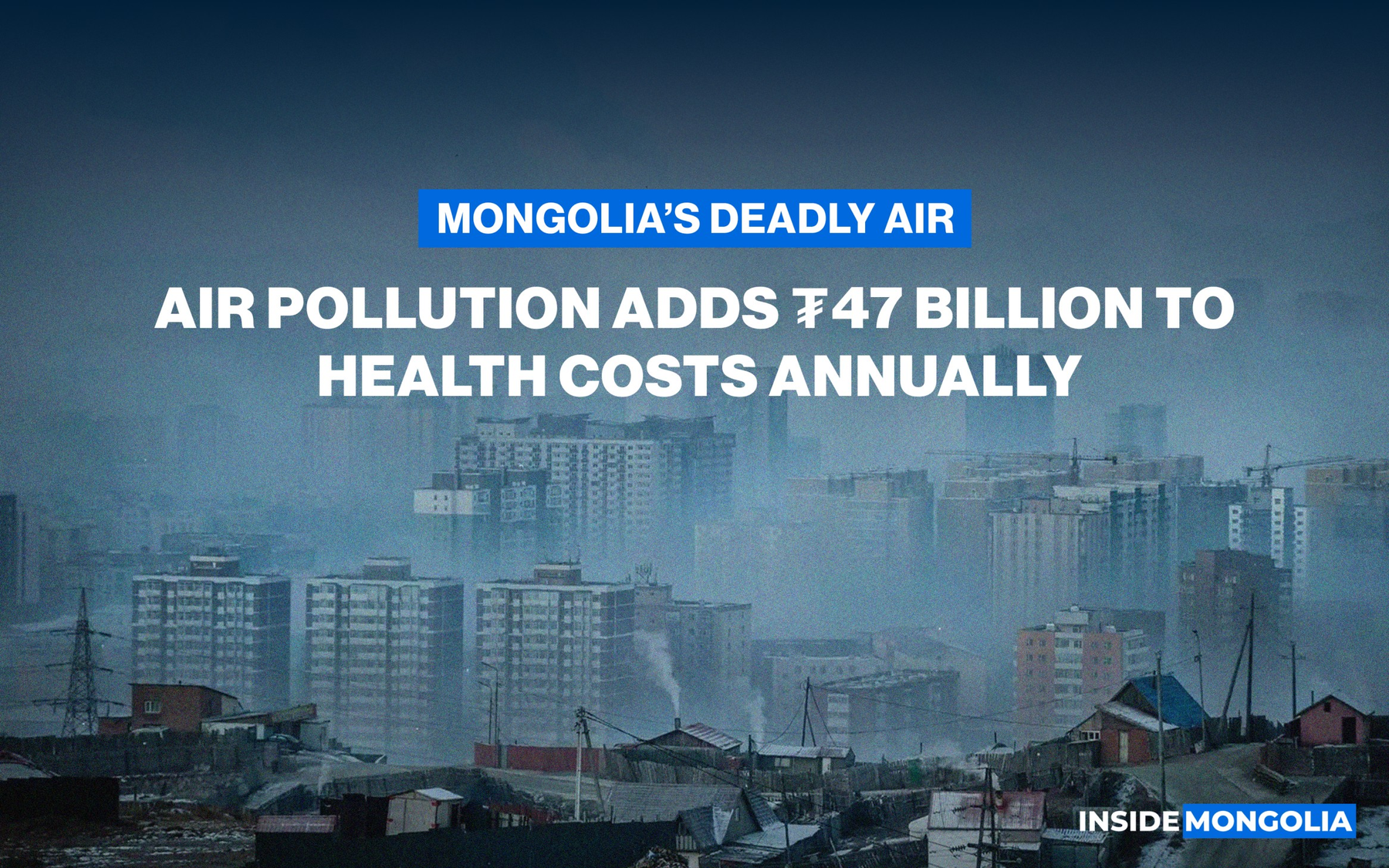300 Mongolians Die Due to Air Pollution-Related Illnesses Annually
Khulan M.
December 9, 2024
December 9, 2024

In Mongolia, almost 90% of the country’s energy supply is consumed for heating purposes, with coal dominating as the primary energy source. While it keeps homes warm during the brutal winters, this reliance on coal has unleashed a public health and environmental crisis, contributing to severe greenhouse gas emissions and staggering air pollution levels.
🤕💵 The Cost of Breathing
Each year, 300 Mongolians die due to air pollution-related illnesses, including 240 children under 5. On the coldest winter days, Ulaanbaatar's PM2.5 levels soar to an alarming 687 micrograms per cubic meter, 27 times above the World Health Organization's recommended safe limit. The capital city is ranked 2nd globally on the list of most polluted cities, and the classification "Very Unhealthy" barely scratches the surface of the problem.
- 😱 This pollution isn’t just choking the air. It’s eroding the health of Mongolia’s population. Respiratory diseases, cancer, mental health decline, and neurological damage are only part of the toll.
- 🤔 The economic translation? Indoor air pollution alone costs Mongolia ₮47 billion in annual health expenditures, while the broader environmental damage from pollution tallies up to ₮360 billion annually. Cumulatively, the economic loss equals a staggering ₮3.9 trillion or 7.6% of Mongolia’s GDP.
.🏭 The Urban Factor
Nearly half the population lives in Ulaanbaatar, packed into 0.3% of Mongolia’s territory. Of these, 53% reside in ger districts, where raw coal burning generates 70%–80% of the city’s air pollution.
- 👔 The government introduced charcoal briquettes in 2018 through Tavantolgoi Fuel LLC. While this initiative promised cleaner air, Mongolians are still breathing toxic smog six years later. The incremental improvements have been far from sufficient.
- 🤏 Hollow promises: Prime Minister L.Oyun-Erdene’s remark, “Nobody expected that we could reduce air pollution within a year by 50%. Our lungs testify to it,” feels painfully ironic. For many, toxic air continues to exacerbate stillbirths, pneumonia, asthma, and nerve damage, overshadowing any proclaimed progress.
📢 A Wake-Up Call
Mongolia’s reliance on coal and its insufficient policy responses are a glaring reminder of the cost of short-term solutions. For the world, Ulaanbaatar serves as a cautionary tale of how unchecked urbanization and outdated energy policies can create a health and economic catastrophe. For Mongolians, it’s an urgent call to demand sustainable solutions that prioritize clean energy, health, and the environment. Ulaanbaatar’s toxic air serves as a grim reminder, “Every breath is a plea for change”.
Comment